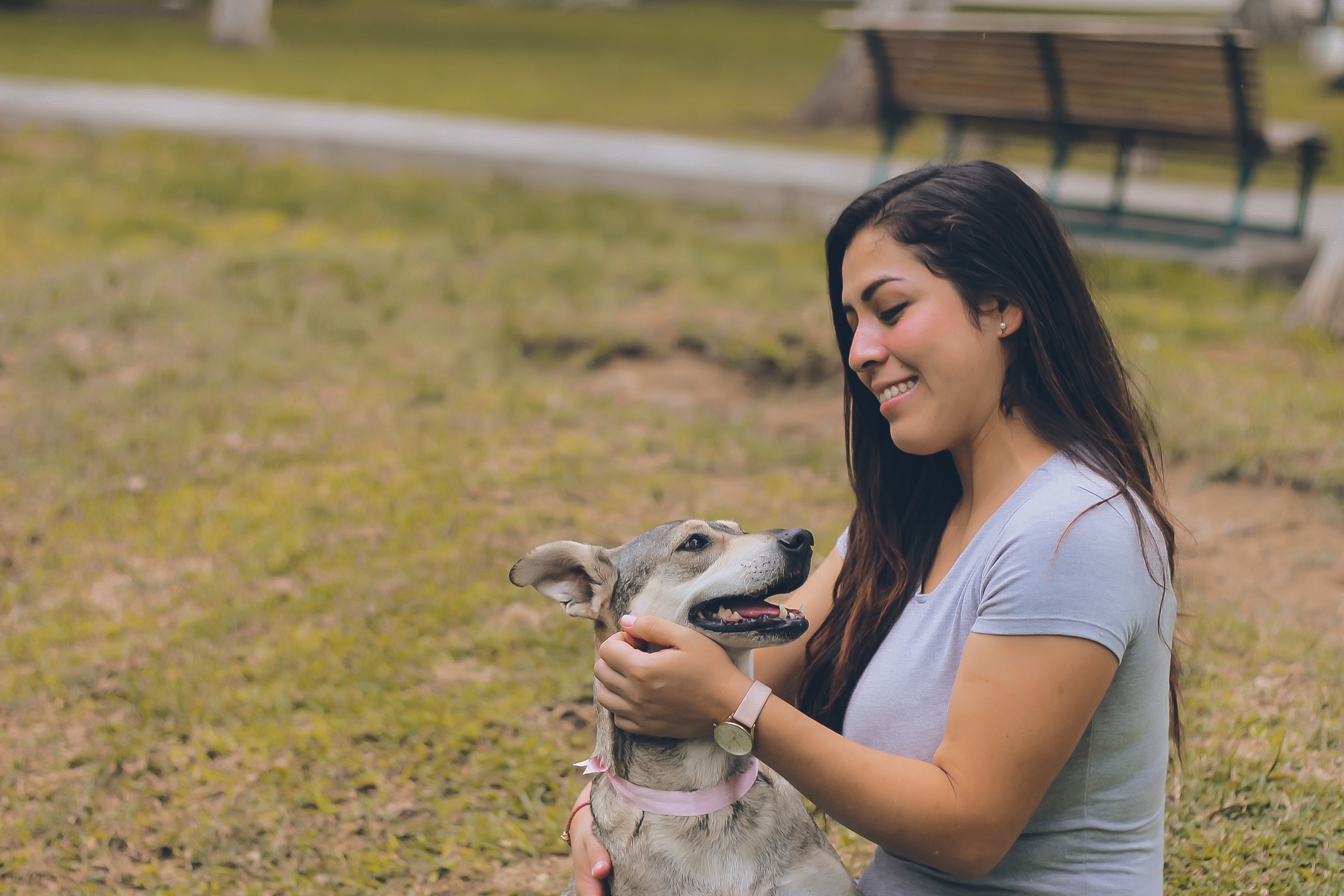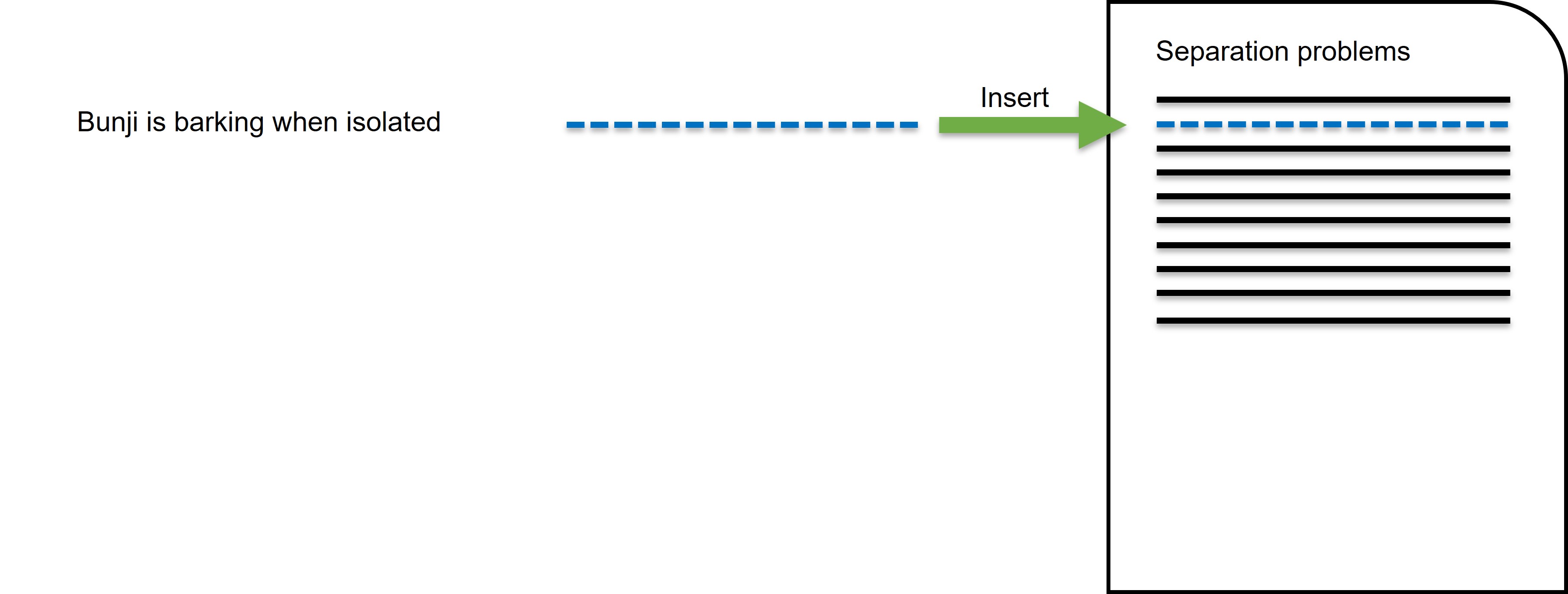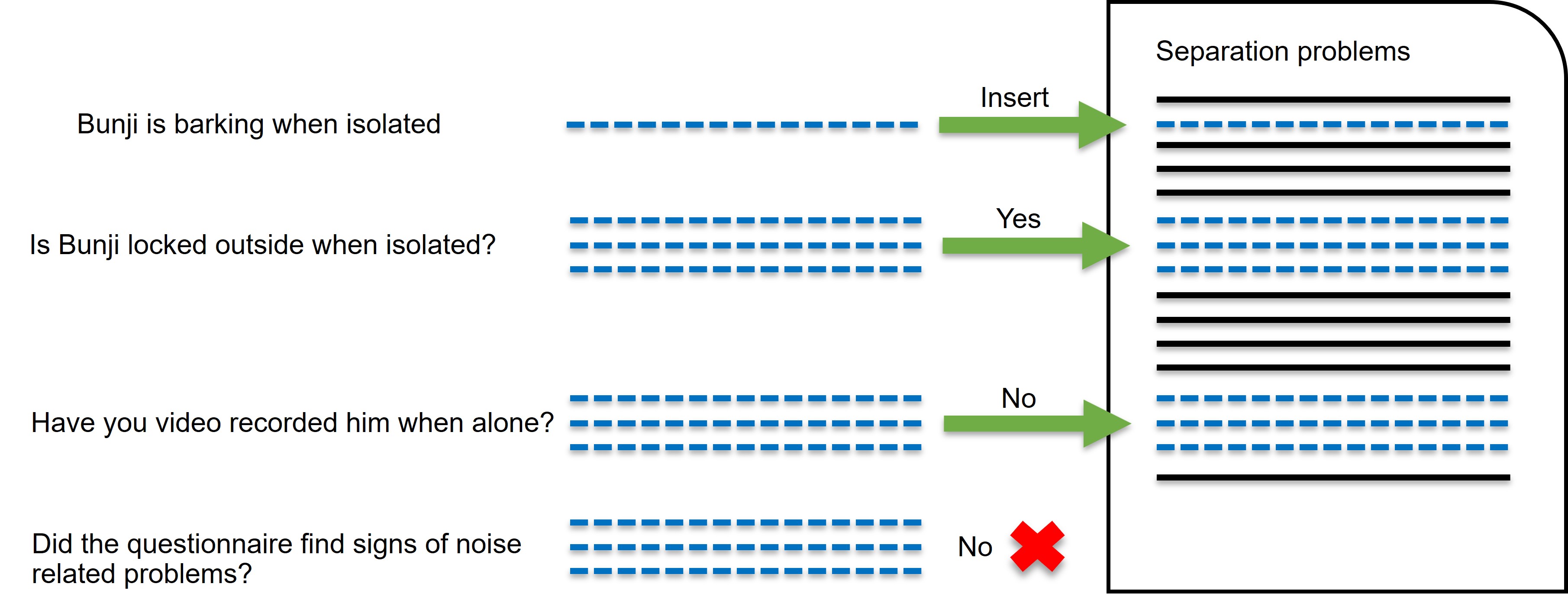How ABAdog technology works

Written by Dr Dennis Wormald,
Last updated 2024
Many people wonder how ABAdog manages to actually give useful custom dog behavior advice based entirely on a questionnaire. In this article, we will go over the basics of how the questionnaire works, and how it is converted into great dog behavior advice.
How the questionnaire works
The ABAdog questionnaire is very unique, because it uses an ethogram. This has the following benefits over other questionnaire types:
- The ethogram is a technique originally developed by scientists to study animal behavior, because it provides unbiased observations of a dog's behavior.
- It does not require the owner to understand why any of the behavior issues are occurring. This is important! We can't assume any level of knowledge.
- It helps owners learn to read and notice the body language of their own dog. This teaches them to understand their dog better.
For example, one ethogram observation that an owner might enter into the questionnaire is: my dog is barking at unfamliar dogs when in the back yard. If the owner is seeing this happen, then it doesn't matter if the owner thinks their dog is aggressive or dominant or playful. We have the observation that can then be used to determine the kind of advice that would be useful for them. After completing the ethogram section of the questionnaire, the ABAdog algorithm selects some relevant follow-up questions for them to complete. These questions help figure out the extent of the problems identified in the ethogram.
Example questionnare responses
In order to explain how the report is generated, it is easiest to go over an example questionnaire response. Then in the next section we will explain how this response would be generated into useful dog behavior advice. Here we will use a dog named Bunji, who's owner went to the vet complaining that he had complaints from his neighbours about barking. He wanted to fix the barking problem, and so the vet sent the owner an ABAdog questionnaire. Some of the questionnaire responses for Bunji are summarised below.
Ethogram:
- Barking at unfamiliar people and dogs when he’s in the yard
- Whining, barking, pacing around when inside the house
- Barking when left alone
Follow-up questions:
- Q: Is Bunji locked outside when isolated?
A: Yes - Q: Have you video recorded Bunji when he's alone?
A: No - Q: Does Bunji eat or drink when isolated?
A: No
How the report is generated
Now we get to the really interesting part of this article. The juicy details of how the behavior advice is actually made from the questionnaire!
Based on the owner's responses to the questionnaire, a programmatic algorithm determines which kinds of problems might be an issue for this dog. For example, any dog that is barking when left alone (like Bunji) is considered to be more likely to have separation related issues. If enough questions point in that direction, a section in their behavior report will include advice on separation related problems. The actual advice in that section is further customed based on the answers of the owner. For the example of separation related issues for Bunji, we have gone over how this works.
Initially, a basic text template of separation related problem advice is generated, then the ABAdog algorithm looks at the questionnaire response and decides whether or not to insert certain blocks of text. The image below explains this.

Because Bunji was barking when left alone, a sentence is inserted into the report to foster empathy. This sentence refers to the fact that the owner is seeing Bunji barking, and mentions that this is often a sign of distress. Now the process repeats:

Based on the questionnaire responses shown above, more information is added to the report that suggests allowing Bunji access to inside when the owners are out and video recoring Bunji when he is alone. However, text is not always added, many other things are crosschecked. For example, Bunji did not show signs of noise-related problems. For this reason, advice on dogs with separation issues that also have noise problems was not included. This process is repeated many times for each problem identified before the behavior report is complete. In addition, practical behavior modification protocols are provided, also depending on their questionnaire answers.
The big picture
From this article, you should be able to imagine how powerful this report can be for helping owners with dog behavior advice. This is why ABAdog provides the best written advice an owner can get for self-education purposes. This makes ABAdog the best first step for dog behavior advice.
In the future, we will be integrating more AI into this product, leveraging the latest technology to provide even more accurate advice for dog owners.